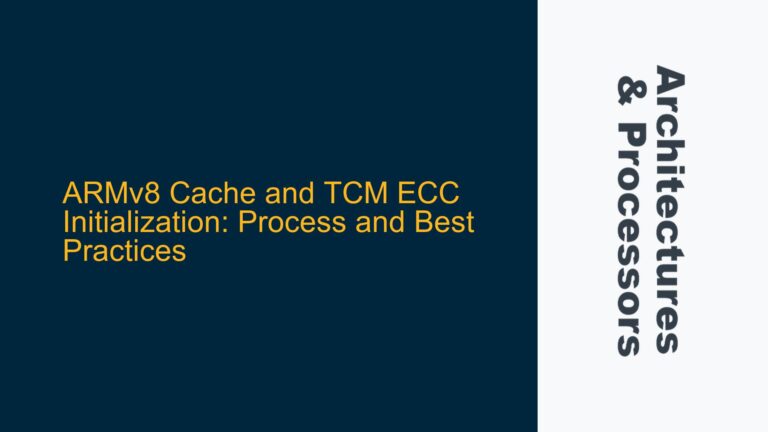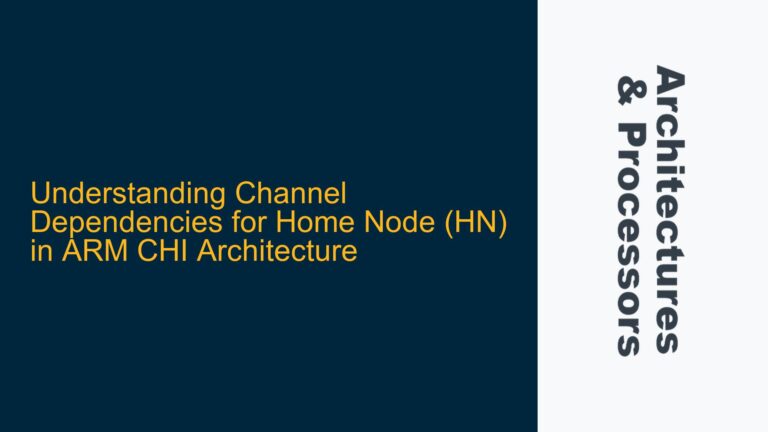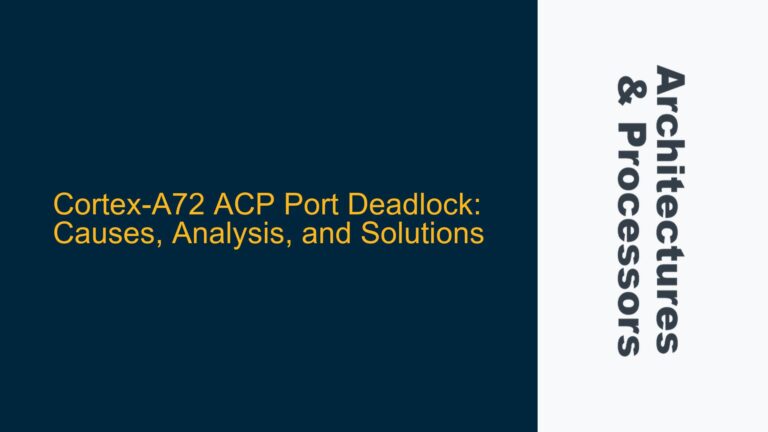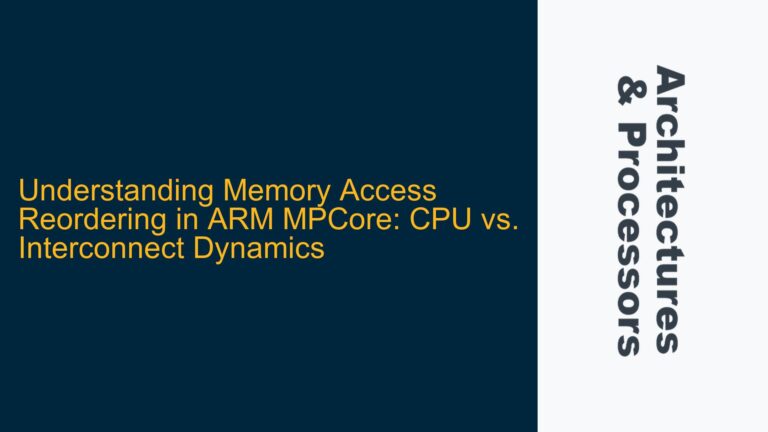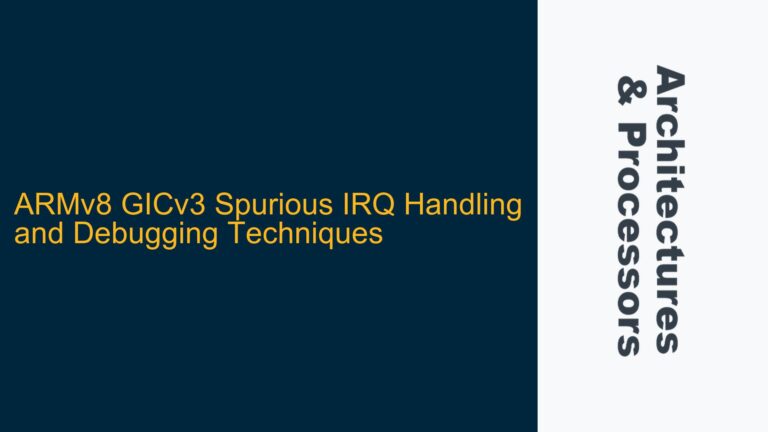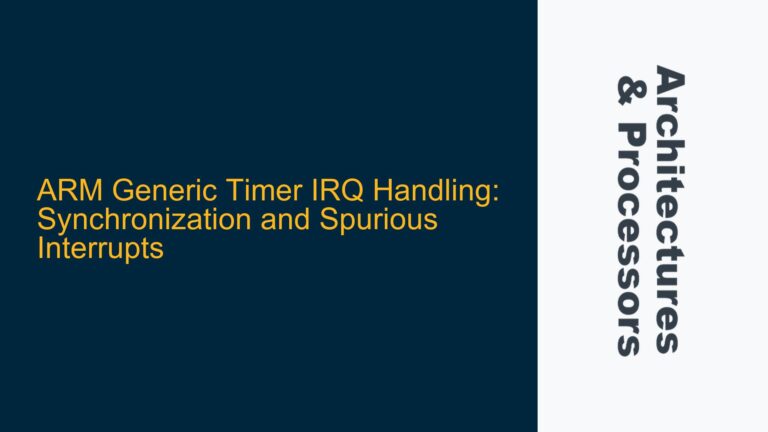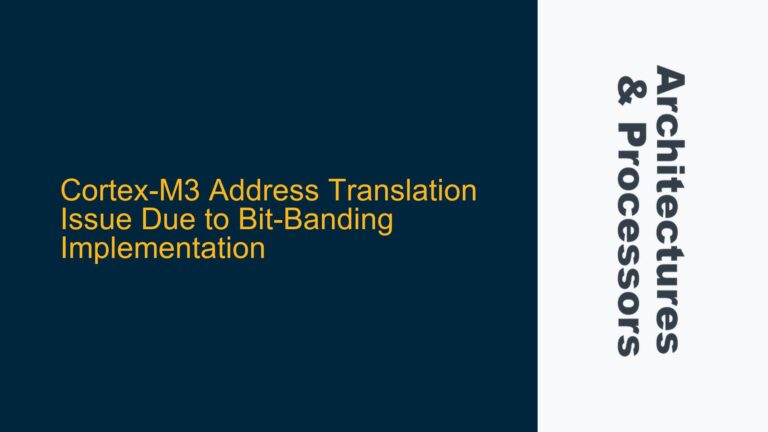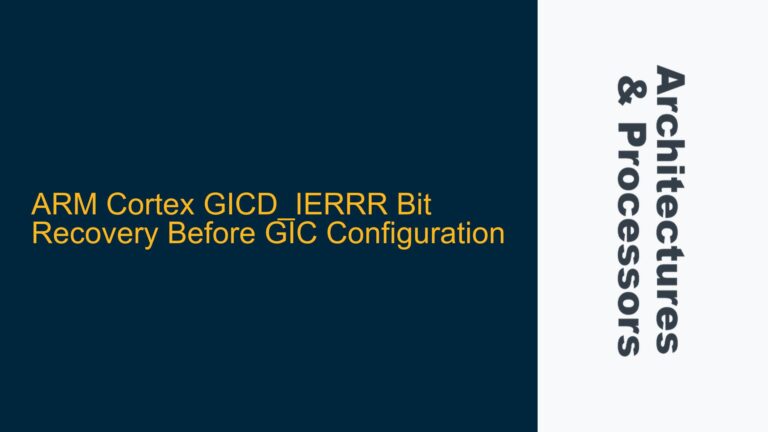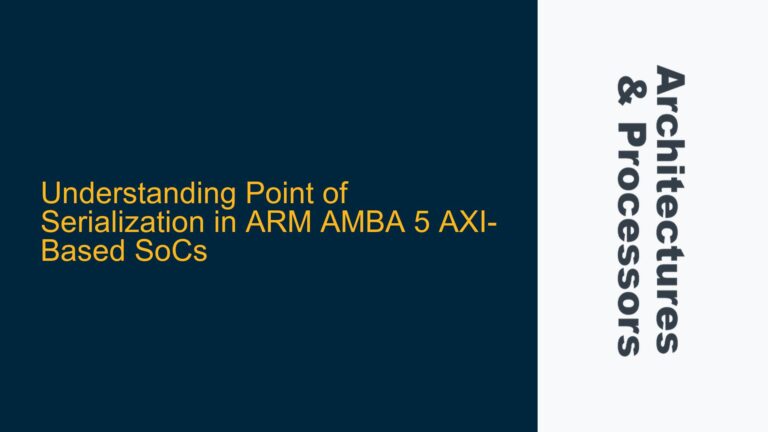ARMv8 Cache and TCM ECC Initialization: Process and Best Practices
ARMv8 Cache and TCM ECC Verification on Power-On In ARMv8 architectures, the Cache and Tightly Coupled Memory (TCM) are critical components that significantly influence system performance and reliability. These memory subsystems often include Error Correction Code (ECC) functionality to detect and correct memory errors, ensuring data integrity. When the system powers on, the ECC verification…
